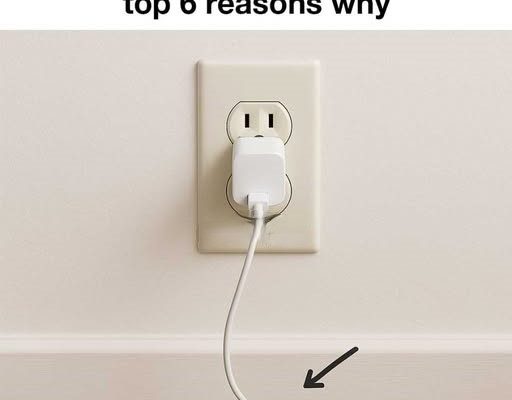In today’s digital age, chargers have become an essential part of our daily lives, powering our smartphones, tablets, and other electronic devices. However, many people have the habit of leaving their chargers plugged into the outlet even when not in use. This seemingly harmless action can actually pose several risks. From increased energy consumption to potential fire hazards, the consequences of leaving chargers plugged in without a device attached can be significant. Understanding these risks is crucial for both safety and efficiency in our homes and workplaces.
Understanding the Energy Consumption of Idle Chargers
Idle chargers, often referred to as ‘vampire devices,’ continue to draw power even when not actively charging a device. This phenomenon, known as standby power or phantom load, can contribute to unnecessary energy consumption. While the amount of power drawn by a single charger may seem negligible, the cumulative effect of multiple chargers left plugged in across households and offices can lead to a substantial increase in energy demand. This not only impacts your electricity bill but also places additional strain on the power grid, especially during peak usage times.
Fire Hazards Associated with Unattended Chargers
One of the most concerning risks of leaving chargers plugged in is the potential for fire hazards. Chargers are electrical devices that can overheat if left plugged in for extended periods, especially if they are of poor quality or damaged. Overheating can lead to sparks or even fires, posing a significant threat to property and personal safety. It’s important to ensure that chargers are unplugged when not in use to minimize the risk of electrical fires, particularly in homes with older wiring or inadequate electrical systems.
Impact on Charger Lifespan and Efficiency
Leaving a charger plugged in without a device can also affect its lifespan and efficiency. Continuous exposure to electrical current, even in small amounts, can cause wear and tear on the charger’s components. Over time, this can lead to reduced charging efficiency or complete failure of the charger. By unplugging chargers when they are not in use, you can extend their lifespan and ensure they function optimally when needed.
Environmental Concerns of Unnecessary Energy Use
The environmental impact of leaving chargers plugged in is another important consideration. The energy consumed by idle chargers contributes to the overall carbon footprint of a household or office. This unnecessary energy use results in increased greenhouse gas emissions, which are a major contributor to climate change. By being mindful of our energy consumption habits, such as unplugging chargers when not in use, we can reduce our environmental impact and contribute to a more sustainable future.
Economic Implications of Increased Energy Bills
From an economic perspective, the cumulative effect of leaving chargers plugged in can lead to noticeable increases in energy bills. While the cost associated with a single charger may be small, multiple chargers across a household or office can add up over time. By unplugging chargers when they are not in use, you can reduce your energy consumption and save money on your electricity bill. This simple action can lead to significant savings, particularly in larger households or businesses with numerous electronic devices.
Security Risks of Leaving Chargers Plugged In
In addition to the physical and environmental risks, there are also security concerns associated with leaving chargers plugged in. Some chargers, particularly those with smart capabilities, may be vulnerable to hacking or unauthorized access if left connected to the power supply. This can potentially lead to data breaches or unauthorized control of connected devices. Ensuring that chargers are unplugged when not in use can help mitigate these security risks and protect your personal information and devices.
Conclusion: Best Practices for Charger Use
To minimize the risks associated with leaving chargers plugged in, it’s important to adopt best practices for charger use. Always unplug chargers when they are not in use, and ensure they are stored in a safe, dry location. Invest in high-quality chargers that meet safety standards, and regularly inspect them for signs of wear or damage. By being mindful of our charging habits, we can enhance safety, reduce energy consumption, and protect our devices and the environment. Simple actions, such as unplugging chargers, can have a significant positive impact on our homes and the planet.



